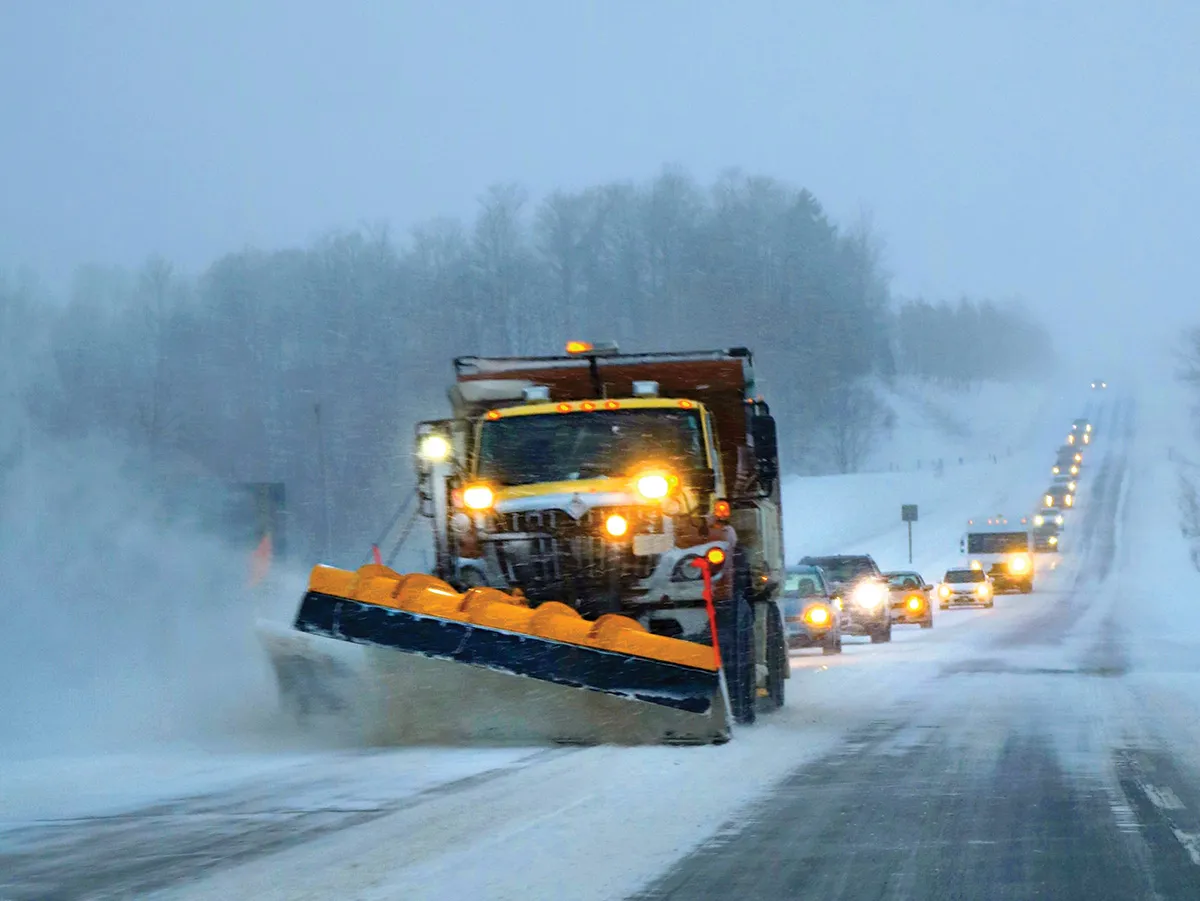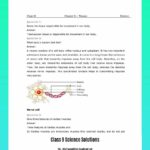Brace yourself for a thrilling adventure into the icy realm of blizzards! We’re about to uncover hidden gems of knowledge about these magnificent and sometimes dangerous storms. Get ready to explore the science behind their formation, marvel at their unique features, and learn why it’s essential to be prepared when blizzards strike. Whether you’re an avid fan of snowy wonderlands or just curious about nature’s extremes, grab your warmest blanket because these blizzard facts are sure to chill you to the bone!
Fun Facts About Blizzards
Ever get caught in a snowstorm and wonder if it’s something more than just your average snowfall? You might have experienced a blizzard! These aren’t your run-of-the-mill winter events; we’re talking about serious weather phenomena.
What exactly makes a blizzard a blizzard? Imagine this: the wind is howling at over 35 mph, whipping snow through the air so fiercely you can barely see your hand in front of your face. Visibility drops to less than a quarter of a mile, and these conditions persist for at least 3 hours straight. We’re talking intense! Just to give you an idea, the Great Appalachian Storm of 1950, a blizzard that made history, was so severe it claimed over 350 lives.
But it’s not all doom and gloom. Blizzards might be powerful forces of nature, but they’re also incredibly fascinating.
Think about it:
- Snowflake Ballet: Every blizzard is like a giant snow globe come to life. If you could slow things down, you’d see each snowflake swirling and twirling, each one completely unique and dazzling. It’s nature’s own microscopic ballet!
- Whiteout Wonderlands: One of the most captivating things about blizzards is the “whiteout.” This happens when the swirling snow blends with the white sky, making it almost impossible to tell up from down or left from right. Beautiful, yes, but it can also be dangerous. It’s easy to get disoriented and lost in a whiteout, increasing the risks of hypothermia and frostbite.
- The Weight of Winter: We all love building snowmen, but when it comes to blizzards, that fluffy white stuff can quickly become a heavy burden. As the snow piles up, its sheer weight can put immense pressure on roofs, sometimes even causing them to collapse.
- Travel Troubles: Remember those epic snowball fights from your childhood? Well, blizzards tend to put a damper on outdoor fun. Roads become treacherous, sometimes even impassable, making it super difficult, even dangerous, to drive.
- Communication Breakdown: Remember that feeling when your phone dies, and you’re completely cut off? Blizzards can have a similar effect on entire communities. The strong winds and heavy snow can knock down power lines and disrupt communication networks, making it really hard to stay connected.
- Warmth in the Storm: Here’s a surprising fact: even though blizzards bring freezing temperatures, they can actually create pockets of warmth beneath the snowpack. It’s like nature’s own insulation. This is especially important for small animals taking shelter under the snow.
- Animal Instincts: Speaking of animals, they have some pretty amazing ways of dealing with blizzards. Some animals, like mice and voles, dig burrows under the snow to stay warm and protected. Others, like deer and elk, huddle together for warmth and to conserve energy. It’s incredible how wildlife adapts to these extreme conditions.
- The Science of Snow: For meteorologists, blizzards offer a unique opportunity to study how snow behaves in different conditions. By analyzing things like wind speed, temperature, and snowflake size, they can better understand and predict future snow events. It’s like a giant, real-life science experiment!
- Predicting the Storm: You know how sometimes the weather forecast is wrong? Well, predicting blizzards is no easy feat! Meteorologists use sophisticated weather models and constantly monitor atmospheric conditions to try to predict when and where these storms might hit.
- Stronger Together: One of the most heartwarming things about blizzards is how they often bring communities together. People help their neighbors dig out, share supplies, and check in on one another. It’s a reminder that even in the midst of a storm, there’s always kindness and resilience.
So there you have it, a glimpse into the fascinating world of blizzards! They might be powerful and unpredictable, but they’re also a reminder of the incredible forces at play in our natural world.
What are three interesting facts about blizzards?
We’ve been talking about how intense blizzards can be, but did you know there’s a lot more to these winter storms than meets the eye? Here are three fascinating facts that might just surprise you:
- Snowflakes aren’t just frozen water: Yes, snowflakes are made of ice, but it’s the way they form that’s super cool. During a blizzard, millions upon millions of these tiny ice crystals collide and stick together in mid-air. The crazy part? Every single snowflake takes on its own unique shape and pattern, kind of like a tiny, sparkly fingerprint! Scientists are still trying to fully understand how this intricate process works.
- Whiteouts: It’s like being swallowed by a cloud: Ever seen so much snow blowing around that you can’t tell up from down? That’s a whiteout, and it’s a classic sign of a serious blizzard. It’s not just the falling snow that causes this disorienting effect; it’s the strong winds whipping up already-fallen snow, creating a blinding swirl that can stretch for miles. Imagine being caught in a massive white cloud, that’s kind of what it’s like!
- Snowdrifts: Nature’s igloos: You’d think everything would freeze solid in a blizzard, but sometimes the snow itself can act like a surprising insulator. Strong winds pile up snowdrifts, and believe it or not, under all that weight, the temperature can be much warmer than the air above. It’s like a natural igloo! Small animals like mice and voles have figured this out—they burrow down into these snowdrifts to stay warm and protected during the worst of the storm. Talk about a cozy winter hideaway!
These facts just scratch the surface of what makes blizzards so fascinating. They’re a powerful reminder of nature’s awesome forces and the surprising ways things work in extreme conditions.
What was the longest blizzard?
While we’ve touched upon some fascinating blizzard facts, you might be wondering about the longest one ever recorded. That’s where things get a little tricky! You see, pinning down the “longest” blizzard requires us to define what “longest” actually means in this context.
Do we mean the blizzard with the longest duration of continuous snowfall? Or perhaps the blizzard with the longest-lasting impacts on a region? Even meteorologists grapple with this question, as there isn’t a universally agreed-upon definition of “longest blizzard.”
However, we can delve into some contenders for the title based on different interpretations:
1. Duration of Continuous Snowfall:
One potential candidate is the blizzard that ravaged Iran in 1972. This monster storm raged for an incredible 10 days, burying certain areas under a staggering 26 feet of snow. While official records for continuous snowfall are hard to come by, this blizzard undoubtedly holds a strong claim to the title.
2. Duration of Blizzard Conditions:
Another contender emerges if we consider the duration of blizzard conditions – meaning sustained high winds and low visibility alongside snowfall. The Great Blizzard of 1888, which paralyzed the northeastern United States, stands out in this regard. This historic storm unleashed its fury for an astonishing 58 hours across some areas.
Ongoing Research and Evolving Definitions:
As our understanding of weather patterns evolves, so too might the criteria for defining a “blizzard.” Some scientists believe that factors beyond wind speed and visibility – such as snowdrift depth and impact on infrastructure – should also be considered.
It’s important to remember that weather events, especially those as powerful as blizzards, are incredibly complex. Records, even historical ones, can be incomplete or open to interpretation. This makes definitively declaring a “winner” in the “longest blizzard” competition a challenging task.
So, while we may not have a definitive answer to the question of the longest blizzard just yet, the quest to understand these awe-inspiring weather phenomena continues! By studying blizzard patterns, refining forecasting models, and unraveling the mysteries of snow and ice, scientists are constantly expanding our knowledge and appreciation for the power and unpredictability of the natural world.
How do blizzards form facts for kids?
We’ve been talking about blizzards, those incredible winter storms. They’re like giant snow makers, but way more intense! But what exactly makes a blizzard a blizzard? Let’s break it down.
Think of it like baking a super-stormy cake. You need the right ingredients mixed together in just the right way. For blizzards, those ingredients are:
- Cold Air: This is like the base of our cake, straight from the chilly Arctic.
- Moisture: Every good cake needs moisture, and for blizzards, that comes from warm air hanging out over the ocean.
- Strong Winds: Our final ingredient is the whisk, whipping everything together with winds blowing at least 35 miles per hour!
Here’s how it all comes together: The cold Arctic air rushes south and bumps into the warmer, wetter air over the ocean. The warm air, being lighter, rises up like a hot air balloon. As it goes higher, it starts to cool down, and all that moisture turns into clouds and…SNOW! This rising and cooling also releases energy, like a little engine powering up the storm. Then, those powerful winds whip the snow around, making it almost impossible to see. That’s what we call a “whiteout.”
Fun fact time! Did you know that:
- Blizzards are kind of like snow hurricanes! They both have those crazy strong winds swirling around.
- The snow in a blizzard isn’t just falling straight down – the wind blows it sideways, making it look like the whole world is spinning!
- They can last for hours, or even days, dumping tons of snow and turning everything into a winter wonderland (but maybe not the fun kind).
- Some blizzards make snowdrifts taller than houses!
- As amazing as blizzards are, they can also be dangerous. It’s important to stay safe and warm inside during a blizzard.
Speaking of staying safe…
- If a blizzard’s coming, the best place to be is inside, all warm and cozy.
- If you absolutely HAVE to go out, make sure you’re bundled up like a giant marshmallow. Don’t forget your hat and gloves!
- It’s a good idea to keep a radio handy (one with batteries, just in case the power goes out) so you can listen for weather updates.
- It’s always smart to have an emergency kit ready, just in case. Pack some food, water, a flashlight, and a first-aid kit.
- And, if you ever get lost or stuck in a blizzard, stay put! It’s much easier for help to find you if you stay in one place.
Blizzards might be powerful, but they’re also a reminder of how amazing nature can be. Just remember to admire them from a safe distance!
What 3 Things Cause a Blizzard?
So, we’ve been talking about blizzards, those intense winter storms that can really shake things up. But what exactly comes together to create these powerful events? Well, it’s like baking a cake – you need the right ingredients in the right conditions!
First off, you need cold air. Think of it as the base of our blizzard cake. Cold air just doesn’t hold onto moisture as well as warm air. This means it’s denser and tends to sink, creating what meteorologists call a cold air mass.
Next up, we need moisture, which is kind of like the flour in our cake recipe. Without moisture, there’s no snow! This moisture usually comes from large bodies of water, like oceans, or even from melting snowpack.
Finally, we need something to give our blizzard cake a little rise, and that’s where lift comes in. Imagine warm air near the ground acting like a hot air balloon. It rises up and pushes the cold air upward. As this cold air gets higher, it cools even further, and the moisture within it starts to condense, forming clouds. As more and more moist air is lifted and cooled, our clouds get thicker and thicker until, you guessed it, snow starts falling!
Just like that cake needs its key ingredients, a blizzard needs its own special trio: cold air, moisture, and lift. Moisture provides the raw material for snowflakes, while lift acts like our baker, creating the perfect cloud conditions for snow formation.
Think about it: Researchers are always studying weather patterns and how they might change in the future. What do you think could happen to the frequency or intensity of blizzards if temperatures rise globally?
How Do Blizzards Get Named?
So, we’ve talked about how wild blizzards can be, but have you ever wondered how they get their names? It’s not like hurricanes, which have fancy names picked out years in advance!
Turns out, the National Weather Service, the folks who keep an eye on the skies, are the ones who give blizzards their official titles. But don’t expect any creative names like “Snowzilla” or “Winter’s Fury” – they keep it simple.
Think of it like an alphabetical list. The very first blizzard of the season gets the letter “A,” the next one gets “B,” and so on. This might seem a little basic, but it’s actually super helpful for a few reasons. First off, it lets everyone – from the weather experts to the folks clearing the roads – be on the same page when they talk about a specific blizzard. No more confusion about which storm is causing all the trouble.
Plus, when a big blizzard hits, having a name makes it easier for emergency crews to get organized and make sure everyone stays safe. It’s much quicker to say “Blizzard Charlie is headed your way” than to rattle off a bunch of coordinates and weather data!
Key Takeaways:
- The National Weather Service is in charge of naming blizzards.
- They use a simple alphabetical system, starting with “A” for the first blizzard of the season.
- This system helps with communication and keeps everyone safe during severe winter storms.
How old are blizzards?
We’ve all been talking about them – those epic winter storms, blizzards. They’ve been making headlines forever, it seems. But seriously, how long have these icy onslaughts been around? Turns out, blizzards are far from a modern-day drama queen. They’ve been throwing their weight around for ages, leaving their mark on history long before we started tweeting about them.
Think way, way back to ancient times. We’re talking historical records and even old folklore mentioning these ferocious storms. One blizzard, for example, made quite a scene in China back in 206 BC during the Han Dynasty. This wasn’t just a snow day; it was a monster storm with heavy snow and brutal winds, causing chaos and, sadly, costing lives.
Fast forward through the centuries, and blizzards haven’t let up. They’ve continued to sweep across civilizations, leaving a trail of, well, snow and ice in their wake. Remember the Great Blizzard of 1888 in the United States? Now that’s a blizzard for the history books! It brought the East Coast to a standstill, dumping an insane amount of snow – some places saw up to 50 inches! Sadly, over 400 people lost their lives in that storm.
Here’s the takeaway:
- Blizzards have been around forever, not just a recent phenomenon.
- We’re talking ancient times – the oldest recorded blizzard dates back to 206 BC in China.
- And they haven’t been messing around. Throughout history, blizzards have caused serious damage and countless losses, like the infamous Great Blizzard of 1888 in the U.S.
What are 5 interesting facts about hurricanes?
Since we’re talking about powerful storms, it’s interesting to consider hurricanes as well. They might not bring blizzards, but they share some similarities in terms of intensity and impact. Here are five fascinating facts about hurricanes:
- Hurricanes Pack an Explosive Punch! Imagine the energy of ten atomic bombs exploding every single second – that’s how much power a hurricane can unleash! These swirling storms are like giant engines, fueled by warm ocean water.
- Hurricanes Can Spawn Twisters! While we usually think of tornadoes forming over land, hurricanes can actually create them too! As these massive storms move over land, they can interact with the atmosphere in ways that cause tornadoes to spin up.
- Slower Hurricanes Can Be Sneakier! You might think a fast-moving hurricane would be more dangerous, but it’s actually the slower ones that often cause more trouble. Why? Because when a hurricane slows down, it has more time to dump rain on a particular area. This can lead to catastrophic flooding, which can be even more destructive than the hurricane’s winds.
- Hurricanes Get Their Own Names! Just like we give names to people and pets, hurricanes get their own names too. But it’s not just for fun – naming hurricanes helps scientists, meteorologists, and emergency responders track these storms and communicate important information more easily. Imagine the confusion if we just called them all “Hurricane”!
- Hurricanes Aren’t Always Bad News! It’s easy to focus on the destruction hurricanes can cause, but believe it or not, they can actually have some positive effects on the environment. For instance, hurricanes can help replenish coastal ecosystems by bringing in much-needed nutrients. They can also reshape landscapes, creating new habitats for plants and animals.
What are some blizzard safety facts?
Okay, so we’ve talked about how intense blizzards can get, but now let’s dive into how to stay safe when the snow really starts coming down. Knowing what to do (and what not to do) during a blizzard can literally be the difference between staying safe and warm or ending up in a pretty scary situation.
- Those Winds Though: Seriously, blizzard winds aren’t messing around. Imagine the coldest wind you’ve ever felt, but way worse. We’re talking frostbite in a matter of minutes! That means exposed skin can turn white and numb super fast. It’s like the wind is trying to bite you, so cover up every inch of skin with layers, and just stay inside if you can. Think of it like a super intense snow day!
- The Sneaky Weight of Snow: We all know snow piles up and makes it hard to get around, but it can actually get dangerous for your house too. Imagine all that snow building up on your roof – it gets heavy! If you’re not careful, all that weight could make your roof collapse. No one wants that, so clear off your roof regularly during a storm if it’s safe to do so.
- The Invisible Danger: Here’s a scary thought: you could have a silent, odorless gas sneaking into your house during a blizzard, and you might not even know it. It’s called carbon monoxide, and it can come from things like generators or heaters if they’re too close to the house. Make sure your chimneys aren’t blocked, either. It’s a good idea to install carbon monoxide detectors in your home – think of them like smoke detectors but for this invisible gas.
- When Your Body Gets Too Cold: You’ve probably heard of hypothermia, right? That’s when your body loses heat faster than it can make more heat. It can happen in really cold weather, especially during a blizzard. When you get hypothermia, your body starts shutting down. You might feel weak, your breathing could slow down, and you might not be able to think straight. Layering up in loose, warm clothes can help prevent this, kind of like creating a little warm bubble around your body.
- Stay in the Loop: Information is key when it comes to staying safe during a blizzard. It’s like having a cheat sheet for the weather! Keep an eye on the weather forecast on TV or your phone, pay attention to any emergency alerts, and consider getting a NOAA weather radio – those things are awesome for getting updates. And make sure your phone and other devices are charged, just in case the power goes out. It’s also a smart idea to have some backup batteries on hand.
The bottom line is, blizzards can be really dangerous if you’re not prepared. But by taking these safety precautions seriously, you’re drastically increasing your chances of staying safe, warm, and comfortable until the storm passes. Remember, it’s always better to be overprepared than caught off guard!
Key Takeaways:
- Blizzard winds are powerful and can cause frostbite really fast.
- Heavy snow can cause roofs to collapse.
- Be aware of the risk of carbon monoxide poisoning during blizzards.
- Dress warmly and in layers to prevent hypothermia.
- Stay informed about weather conditions and have a plan.
What are three facts about the great blizzard of 1888?
So, we’ve been talking about massive snowstorms, and the Great Blizzard of 1888 definitely deserves a spot on the list. This wasn’t just a snow day; it brought the East Coast to a standstill for days. Let’s dig into what made it so unforgettable:
- Buried in Snow: Picture this: you wake up, and there’s snow piled up outside your window… but not just a few inches. We’re talking 10 to 58 inches of snow, depending on where you were! That’s enough to bury a car, maybe even a small house!
- Drifts Higher Than a House: Okay, remember all that snow? The wind wasn’t about to let it just sit there. It whipped it up into monstrous drifts, some taller than 50 feet! That’s like five stories high—taller than most trees. People couldn’t even open their doors, let alone go anywhere.
- A Weather Surprise Attack: Here’s the thing about this blizzard: it caught everyone off guard. Usually, these mega-storms are heralded by a blast of cold air, you know, to set the stage? But not this one. It just rolled in, full of fury, without warning. This made it even worse for coastal communities who were totally unprepared for such a sudden, intense hit.
The Great Blizzard of 1888 reminds us that Mother Nature can be unpredictable and powerful. Even with today’s technology, it’s a good reminder to respect the forces of nature and be prepared for the unexpected.
How long do blizzards last?
So, we’ve talked about how wild blizzards can be, but how long does this icy party last? Well, it’s not like setting a timer! Blizzards can be pretty unpredictable when it comes to their duration.
Think of it like baking a cake – you’ve got your basic ingredients: cold air, moisture, and some unstable weather patterns stirring things up. But just like the oven temperature or the amount of batter can change how long a cake bakes, things like temperature, wind speed, and even how much moisture is hanging around can make a blizzard short and sweet or drag on for days!
Temperature is a big deal. The colder it gets, the more likely a blizzard wants to stick around. Then you’ve got wind speed. The stronger the wind blows, the longer the blizzard feels intense. It’s like the wind is whipping everything into a frenzy and making the blizzard’s effects last even longer. And of course, you can’t forget about moisture. Just like you need water to make snow, a blizzard needs a steady supply of moisture to keep going.
Some blizzards are like a quick visit from a grumpy neighbor – in and out within a few hours. But others are like that houseguest that just won’t leave! Remember the “Great Blizzard of 1888”? That monster shut down the entire East Coast for over a week!
That’s why it’s important to know how long a blizzard could last. If we know what we’re in for, we can be prepared, right? It’s like checking the weather forecast before a trip – you want to pack the right gear! Stocking up on supplies, making sure your home is secure, and being ready for potential power outages are all part of being blizzard-savvy.
While we can’t control the weather, understanding how long these winter storms tend to stick around helps us stay safe and prepared.
Did you know that trumpets have been around for over 3,000 years? They’re one of the oldest musical instruments in the world, and they’ve been used in a wide variety of musical genres, from classical to jazz to rock. If you’re interested in learning more about this fascinating instrument, check out our article on fun facts about trumpets.
















